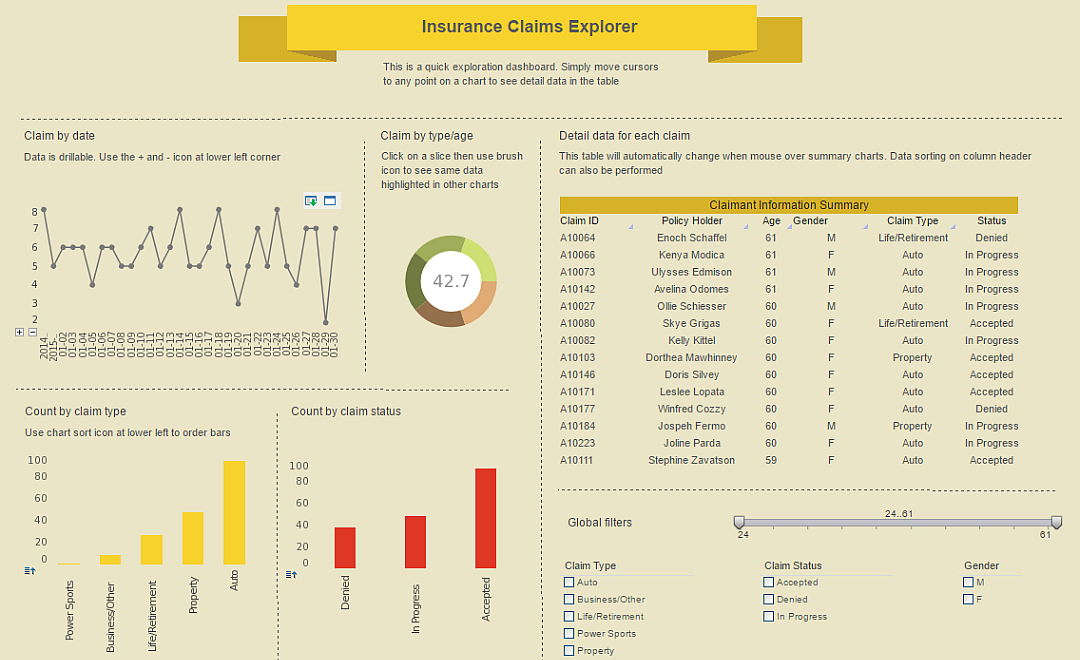InetSoft Webinar: The Speed of Data Integration with a Data Mashup Platform
This is the continuation of the transcript of a Webinar hosted by InetSoft on the topic of "Agile BI: How Data Virtualization and Data Mashup Help." The speaker is Mark Flaherty, CMO at InetSoft.
How much faster is to integrate new data sources? Generally speaking you’ll find a data mashup platform 4 to 5 times faster than if you had a traditional waterfall approach to using ETL and a data warehouse or data mart, or a propagation based approach like EII. And at the same time, we have to recognize that those systems, data warehouses and ETL processes, may be in place, and they do perform useful functions in certain conditions. Understanding this comes with expertise, and a lot of experience comes from being in the field seeing how does this really work in hybrid models with existing BI tools. One of the things that we are seeing as one of the key players in this industry is that there is a tremendous momentum for data virtualization. We feel it's reaching or it has reached the tipping point, and it's for three reasons.
One, the technology itself today is far more capable than the early sort of products that were predecessors to data virtualization. These could be enterprise information integration, EII or data federation products. Such business intelligence products still exist, but the best-of-breed data virtualization platforms today integrate data services and data mashup.
| #1 Ranking: Read how InetSoft was rated #1 for user adoption in G2's user survey-based index | Read More |
They support hybrid models. They deal with unstructured Web and semi-structured data. So the technology’s performance, security, and data access capabilities are far improved. Therefore data mashup platforms also more up to the challenge. The second reason why data mashup is gaining popularity is that the basic old model or traditional way of thinking about data integration has started to show enough cracks based on business needs, primarily, the need for agility, but also the cost factor, and the need to deal with big data and real time data access and the cloud and Web.
Then very importantly, there is the people factor. People are much more comfortable in their daily lives using virtualization. They understand the tradeoffs. They know how to deal with the tradeoffs, and therefore they are able to adapt this effectively in their organizations. So we are going to see some data mashup examples shortly. Before we do, I am going to explain data virtualization a little deeper. Let me divide this picture into areas of discussion.
First the box in the middle is data virtualization platform and the various data services. These are your existing data sources. There is wide spectrum of data types in most organizations ranging from highly structured data warehouses, databases, multidimensional sources, enterprise applications including package or custom apps, some of which may be moved into the cloud or a SaaS application. You also have log files, XML documents, XML data, and flat files.
Additional Capabilities of Virtualization Platforms
Up to here, most people understand, this has been the domain of most data integration tools. The advanced data virtualization platforms also provide additional capabilities, but the first one is this idea of Web automation. Web automation has the ability to go into public or hidden Web sites using the browser based interface and be able to interact with those applications in a more ordered and structured way. In the past, the simplest example of this was screen-scraping, but Web automation goes beyond that to have bidirectional integration. Why would you want to do that? Well there is competitive information out there, there are third-party data services out there, like data.gov. There are SaaS applications that don’t provide an API.
When you move further to the right, people have always been able to tap into and read the metadata around unstructured data, such as document name and time of last update, etc. But what we are really now talking about is taking semantic information, inverting the index, doing other techniques like filtering against taxonomies, etc to create a normalized view of the data, creating the full spectrum of structure and unstructured data.
 |
Read the top 10 reasons for selecting InetSoft as your BI partner. |
| Previous: Virtualization Platforms Make Mashups Possible |
